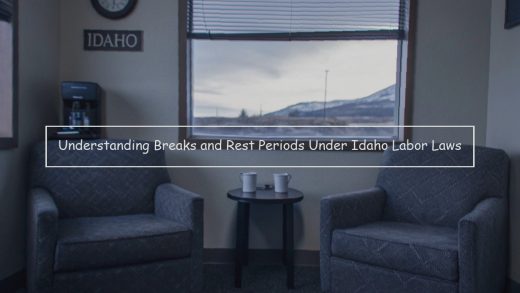
Introduction to Truck Camera Laws
The use of cameras in commercial vehicles is becoming increasingly common as a way to improve safety and reduce costs associated with accidents. However, as with any new technology, it is important for truck owners, drivers, and fleet managers to understand the regulations surrounding their use. Cameras can provide valuable evidence in the event of an accident, but not all footage may be admissible in court. Furthermore, some states have more stringent regulations surrounding the use of cameras in vehicles than others, and it is important to understand what these laws entail in order to ensure compliance.
Understanding relevant laws is all the more important as the use of cameras increases . In 2020 the Federal Motor Carrier Safety Administration (FMCSA) published new rules surrounding the use of cameras in commercial vehicles, including those operated by third-party contractors. These rules outline when and how cameras may be used, as well as what types of data must be collected and retained. It is essential for employers and fleet managers to understand these rules in order to ensure compliance and avoid costly penalties.
This blog post will provide an overview of the relevant laws surrounding the use of cameras in trucks and commercial vehicles, as well as best practices for implementation. By providing a comprehensive guide to current truck camera laws, employers can ensure they are using this technology in a way that complies with the letter of the law and best protects their company.
Federal Truck Camera Law
In addition to state and local regulations, the federal government has introduced mandates that affect the use of truck cameras across state lines. Most of these laws reside under Federal Motor Carrier Safety Administration (FMCSA) guidelines, which set the standard for commercial trucking safety as well as the adherence of nationwide truck operator networks. Some rules are more internally focused, such as the requirement to submit specific records in the event of an accident—but others have a direct connection to the use of cameras within trucking.
One of the major recent developments affecting the use of truck cameras has been the introduction of the Truck Parking Safety Assessment Act of 2020 and its subsequent acceptance by the Department of Transportation (DOT). The bill requires the DOT to study the exact extent of the problem—namely, the lack of safe parking spots for large commercial vehicles resulting in unsafe behaviors on behalf of truck drivers—before potentially issuing a mandate that extends the use of onboard parking camera systems to monitor the campsites of truck drivers who are forced to park in unsafe areas. This follows the 2019 enactment of several related laws, including the Furthering Access to Shipping Act and the Waste Recovery Act, which have sought solutions to the issues presented by this expanding crisis.
State Truck Camera Law
State-specific regulations are another matter altogether. While some states have adopted laws and regulations addressing the use of cameras in trucks, most have not. The states that do often have unique requirements that differ from those of other states and from FMCSR. For example: In the absence of relevant federal laws and regulations, the states have wide discretion to regulate the use of truck cameras, and often have taken different approaches. For example: In addition to differences in state regulations, there are also variations in how states treat the use of truck cameras for state commercial motor vehicle safety inspection purposes. Some states impose no requirements at all; others require that images and/or data from truck cameras be stored for a defined period, debugged, and/or made available for inspection.
Privacy and Legal Disputes
As with any evolving technology, businesses and their attorneys have grappled with how to weigh innovation against privacy protection for employees and clients. Most often, truck camera privacy concerns tend towards required consent, data storage and security, and admissibility as evidence in court.
Many trucking companies add affirmative consent to their driver contracts, granting permission for the company to install and use camera systems to manage their fleet. Consent may also take the form of an explicit company policy about what kind of cameras can be installed in trucks, and where the footage will be stored. This may be in a manually or automatically selected cloud storage system or an encrypted hard drive on the truck for a set period of time, at which point it’s automatically deleted.
Existing case law varies state by state, and nearly every case decides whether or not to allow the camera footage into evidence on a case by case basis. A few states have weighed in. In 2010, Billy Ray Merkle sued bobcat operator Davis, who he claims crashed into his vehicle, forcing him off the road and causing him to roll his truck. Davis’ insurance company claims Davis braked suddenly and Merkle wasn’t paying attention and rear-ended the bobcat.
The cause of the accident was The Ohio Supreme Court precedent that allowed or disallowed video footage to be admitted as evidence in a jury trial. Ohio followed the Frye standard for admissibility, which requires that the method by which evidence is collected be accepted by the scientific community that is related to the evidence gathered. Illinois Supreme Court in 2014 adapted the Daubert Rule, which grants more deference to the trial judge in helping to determine the scientific reliability of evidence. While American Trucking Associations supported Davis in their brief, stating: "The plaintiffs’ attempt to define ‘reasonable foreseeable use’ to include meritorious lawsuits would be devastating to the trucking industry, requiring insurers to make business judgments based on . . . [unpredictable] litigation activity."
The electronically captured footage from the truck camera led to the dismissal of the case, as the truck camera footage showed that Davis’ truck had to have been stationary in order for the collision to occur the way it did. Because of the specific facts of this case, they allowed the electronically captured footage into evidence, while more broadly, states like Illinois and Ohio expected to see an increase of truck camera systems as the industry adopts the technology.
Truck Owner Compliance Tips
Given the importance of complying with truck camera laws, it is imperative that truck owners and fleet operators equip themselves with the information, tools, and strategies to do so. While the legal framework surrounding inspections and installations of truck cameras can be complex, there are practical steps that truck owners can adopt to ensure compliance. The following subsections detail some compliance strategies that truck owners and fleet operators should consider:
Implementing monitoring technology in compliance with law
Truck owners and fleet operators should endorse the use of monitoring technology to ensure that in-cab camera systems are operating in accordance with the law. For example, while different fleet-facing software platforms have their own unique monitoring capabilities, the most common tools in the industry include geofencing and alerts. Geofencing technology helps truck owners and fleet operators monitor when, where, and how long camera systems like forward-facing dash cameras are in operation, in an automated fashion. Alerts can also be used to inform truck owners when a camera system is on or off in a given location.
Revising policy frameworks to facilitate camera compliance
Policy frameworks form the backbone of corporate culture , and are therefore instrumental to ensuring compliance with camera laws. When implementing policy changes to accommodate camera laws, it is critical that fleet owners maintain consistency with their internal policies, labor agreements, and union collective agreements. Below are some general tips for updating policy frameworks:
Engaging with various stakeholders
Engaging with various stakeholders—such as industry members, association members, stakeholders, customers, employee groups, and unions—is key to ensuring the successful implementation of truck camera systems in compliance with law. While the "business case" for adopting cameras may be clear for trucking regulators, it may not be as clear for employees. Employee engagement is, therefore, critical to the successful implementation of monitoring technology. To be successfully implemented, monitoring technology should be viewed as an opportunity to improve both operational productivity and employee well-being. While the industry has made strides in regulating truck cameras, some legal hurdles remain. To ensure compliance with truck camera laws, fleet owners must stay up to date on the latest issues concerning policy implementation and compliance.
Future of Truck Camera Regulation
As technology continues to advance at a rapid pace, the future of truck camera legislation will likely reflect both technological progress and a growing public demand for safer roadways. One area that has been under consideration is the use of 360-degree camera systems. These not only record video footage but can also detect and analyze various parameters, such as speed, distance from other vehicles and even vehicle malfunctions. Such technology could provide further evidence in the event of an incident and assist in the training of drivers.
Another potential trend in truck camera legislation is more stringent requirements for data storage and usage. This could be driven by concerns about privacy and the potential for misuse of the data. Lawmakers may consider regulations that balance the need for safety and transparency with the rights of the drivers and the companies.
There is also the question of how truck camera laws will evolve as self-driving technology continues to mature. Will there be a push toward fully autonomous trucks that require no driver monitoring at all, or will current regulations grow with us to account for this shift?
Finally, the public policy landscape around environmental concerns may also play a role in shaping the future of truck camera laws. As air travel becomes an increasingly concerning environmental issue, there may be a greater push to ensure that trucks are being operated with the utmost safety and efficiency.
The future of truck camera legislation is filled with possibilities, and time will tell how these trends will manifest and affect the trucking industry at large.
Wrap Up and Legal Resources
In summary, adherence to truck camera laws is not just a matter of logistical excellence; it’s crucial to avoid expensive legal pitfalls. The truck camera laws in your jurisdiction may outline specific requirements for the installation and use of camera systems. If you’re operating your business in compliance with your jurisdiction’s camera requirements, it is also advisable to put your attorneys on notice of this in case of future litigation. If you haven’t yet taken the step towards compliance with local, state , and federal truck camera laws, it’s recommended that you do so right away. The potential liability of operating an outside of the line fleet may be too significant to ignore, even when stricter local laws are inconvenient. For more information about truck camera laws in your jurisdiction, be sure to contact your trucking and transportation attorneys. In addition, a few government resources for truck camera laws can be found at the National Highway Traffic Safety Administration and Federal Motor Carrier Safety Administration websites.



